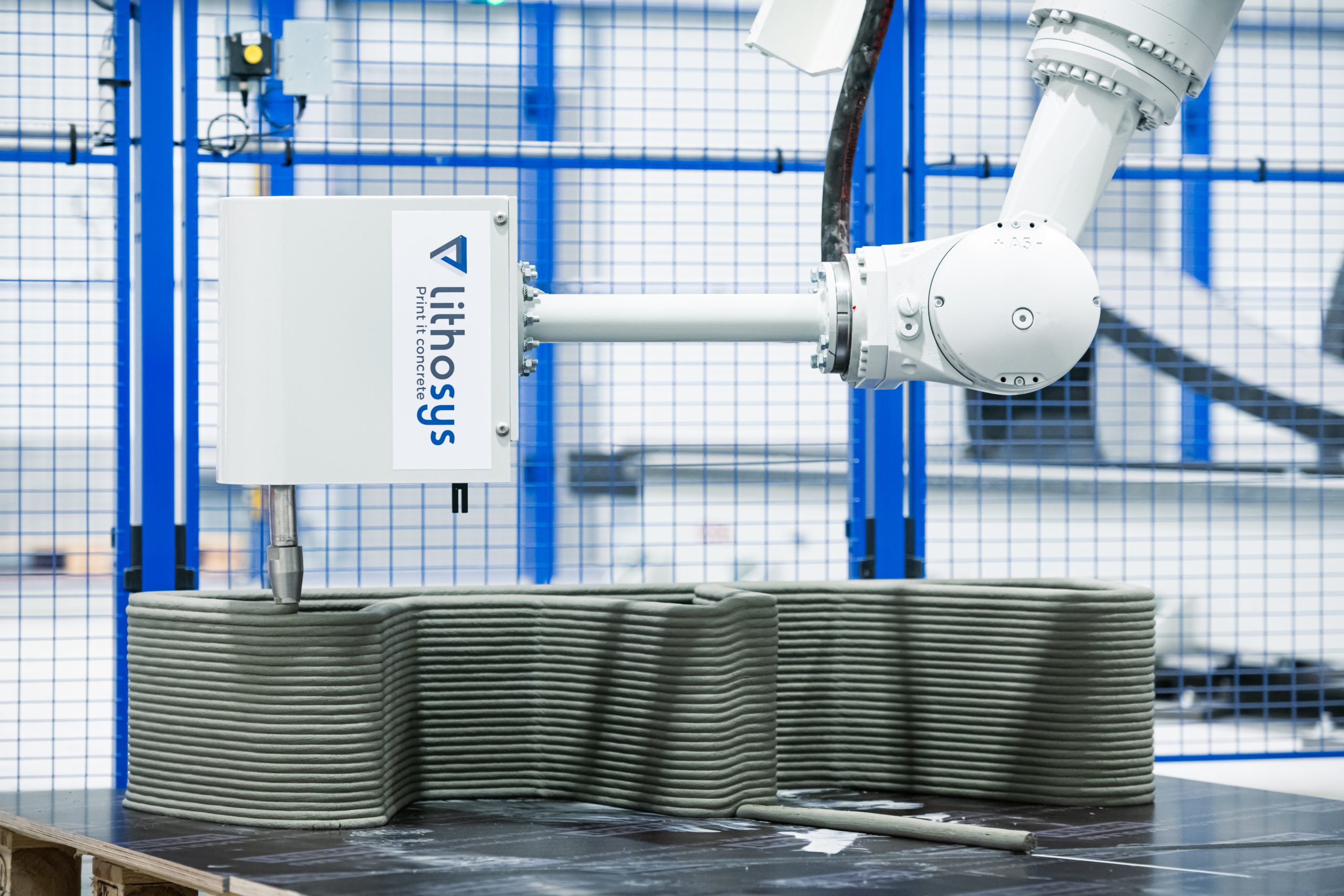
During the past 12 months, VICAT have worked on optimising a new construction system, concrete 3D printing, in accordance with their commitment on reducing the quantity of concrete in structures.
This constructive mode is robot assisted in order to minimize the use of specially formulated concretes. This digitalization of construction will enable VICAT to design and produce lighter structures more precisely.
Lithosys 3D printing technology, can reduce by up to 50% the carbon footprint of a wall, can reduce building site waste and improve biodiversity. Lithosys concrete mix-design is engineered to a precise viscosity to allow the pumping and deposition of matter while guaranteeing mechanical and durability performances once concrete has hardened. 3D designs are converted into robot paths so to use only the “necessary” quantity (between 40 to 60% compared to conventional modes). Depending on the object to print, the thickness of concrete layers and time between layers can vary.
Concrete 3D printing could be used as a stand-alone technology or in association with more conventional ways of building. In both cases, this technology will impact the construction sector in terms of design (freedom of shape), structural engineering (new modelling) and production of concrete buildings (less arduous work).